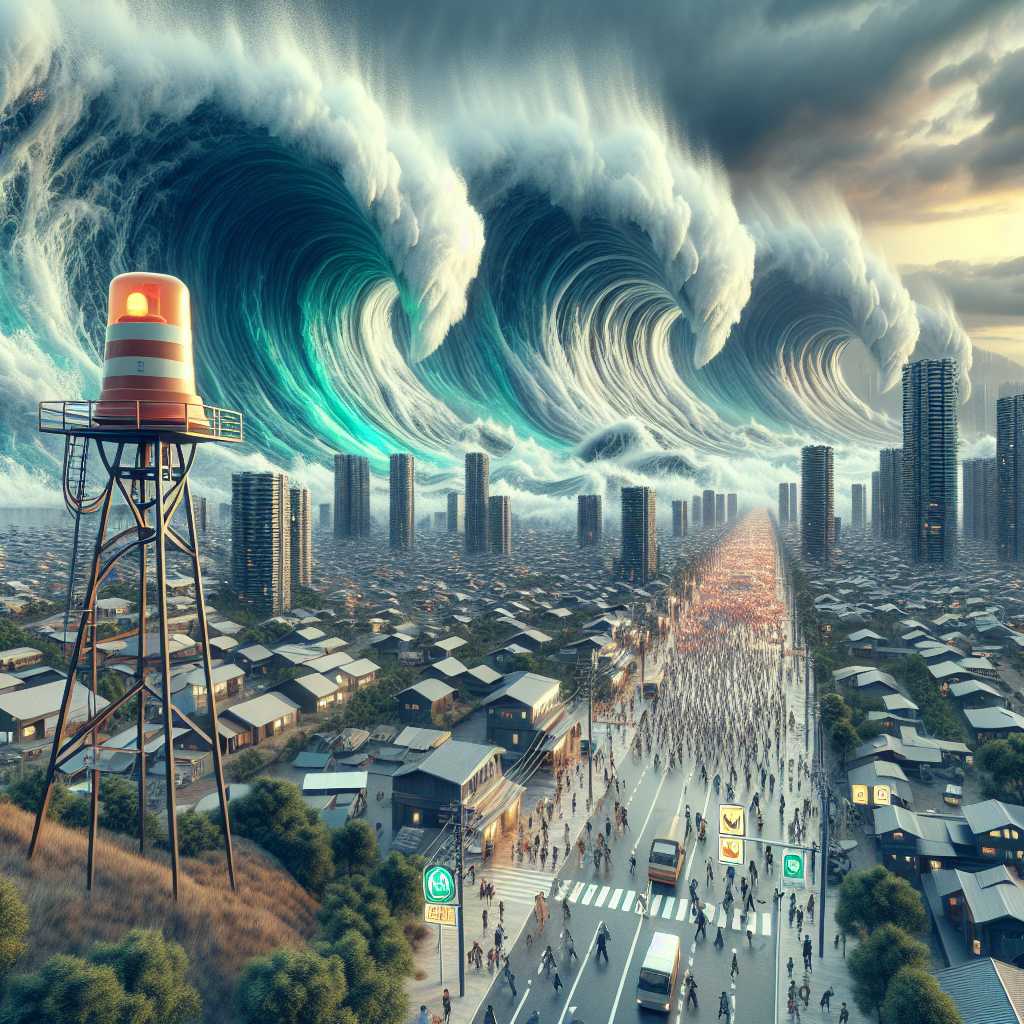Understanding Tsunamis: The Catastrophic Power of Ocean Waves
Introduction to Tsunamis
Tsunamis are some of the most powerful and catastrophic natural events on Earth, characterized by a series of ocean waves with extremely long wavelengths and period, caused primarily by underwater seismic activity such as earthquakes, volcanic eruptions, or landslides. The term “tsunami” comes from the Japanese characters “tsu” meaning harbor, and “nami” meaning wave. Although often referred to as tidal waves, tsunamis are not related to the tides, which are caused by the gravitational pull of the moon and the sun.
The Formation of Tsunamis
Tsunamis begin with a displacement of a large volume of water, typically in an ocean or a large lake. Earthquakes beneath the sea floor are the most common cause of tsunamis. These undersea quakes typically occur when tectonic plates collide and one plate is thrust over another. This sudden motion pushes water upward, leading to the formation of surface waves.
Volcanic activity can also give rise to tsunamis, either through the collapse of volcanic structures into the sea or due to explosive eruptions that propel large amounts of material into the water. In rarer incidences, tsunamis can be the result of meteorite impacts or coastal rockslides.
Characteristics of Tsunami Waves
Unlike typical surf waves, which are generated by wind and only affect the surface layer of the ocean, tsunami waves involve the entire depth of sea water. This is why their energy and movement differ significantly from ordinary waves. As a tsunami approaches shallow waters near coastlines, the sea floor topography causes the wave height to increase dramatically—a process known as wave shoaling.
Tsunami waves also generally have extremely long wavelengths—sometimes hundreds of kilometers—and can travel across entire ocean basins with relatively little energy loss. This enables tsunamis to strike far-off coastlines with devastating force hours after the initial event that generated them.
Impact on Human Populations and Infrastructure
When tsunamis reach coastal areas, they can cause extensive destruction. The massive energy carried by a single tsunami wave can flatten buildings, carry cars and boats inland, rip up trees, and cause catastrophic flooding. Low-lying areas near coasts are particularly vulnerable, as are island nations that might face waves arriving from multiple directions.
Aside from immediate destruction, tsunamis often result in substantial economic damage due to impacts on infrastructure such as power plants, roads, bridges, and sewage systems. Moreover, tsunamis can contaminate drinking water supplies with saltwater and can set off secondary disasters like fires resulting from broken gas lines and power lines.
To mitigate the impact of future tsunaisms, countries prone to these disasters are focusing on early warning systems, education on evacuation strategies for their people, and better urban planning measures to keep critical infrastructure away from potentially hazardous zones.
Historical Tsunamis and Lessons Learned
Throughout history, several tsunamis have stood out for their destructiveness and resultant loss of life. Some of the most notable include the 2004 Indian Ocean tsunami triggered by one of the largest earthquakes ever recorded; it caused an estimated 230,000 deaths across multiple countries. The 2011 Tōhoku earthquake and tsunami in Japan also brought unprecedented damage and tragically demonstrated risks related to nuclear power plants during such events.
Each significant tsunami prompts reevaluation of existing preparedness strategies and reinforces the need for heightened safety measures worldwide.
Developing Effective Tsunami Warning Systems
Advancements in seismic monitoring and communication technologies have greatly improved tsunami detection and early warning capabilities. A crucial aspect of this system is an array of pressure recorders on ocean floors that detect changes in water columns—indicating possible wave movements—sending data to buoys at the sea surface which relay information to satellites and then land-based stations.
Educating communities about how to respond when receiving a tsunami alert is equally essential. Coastal communities may only have a few minutes to evacuate once a nearby undersea quake occurs. This underlines not only prompt dissemination of warnings but also public understanding of natural warning signs such as earth tremors or an unusual withdrawal of water from beaches.
Notes
Image Description An image depicting towering tsunami waves approaching a coastal city with early warning system icons (such as alert sirens or evacuation route signs) visible along the coastline as people evacuate inland.
OYvdq

